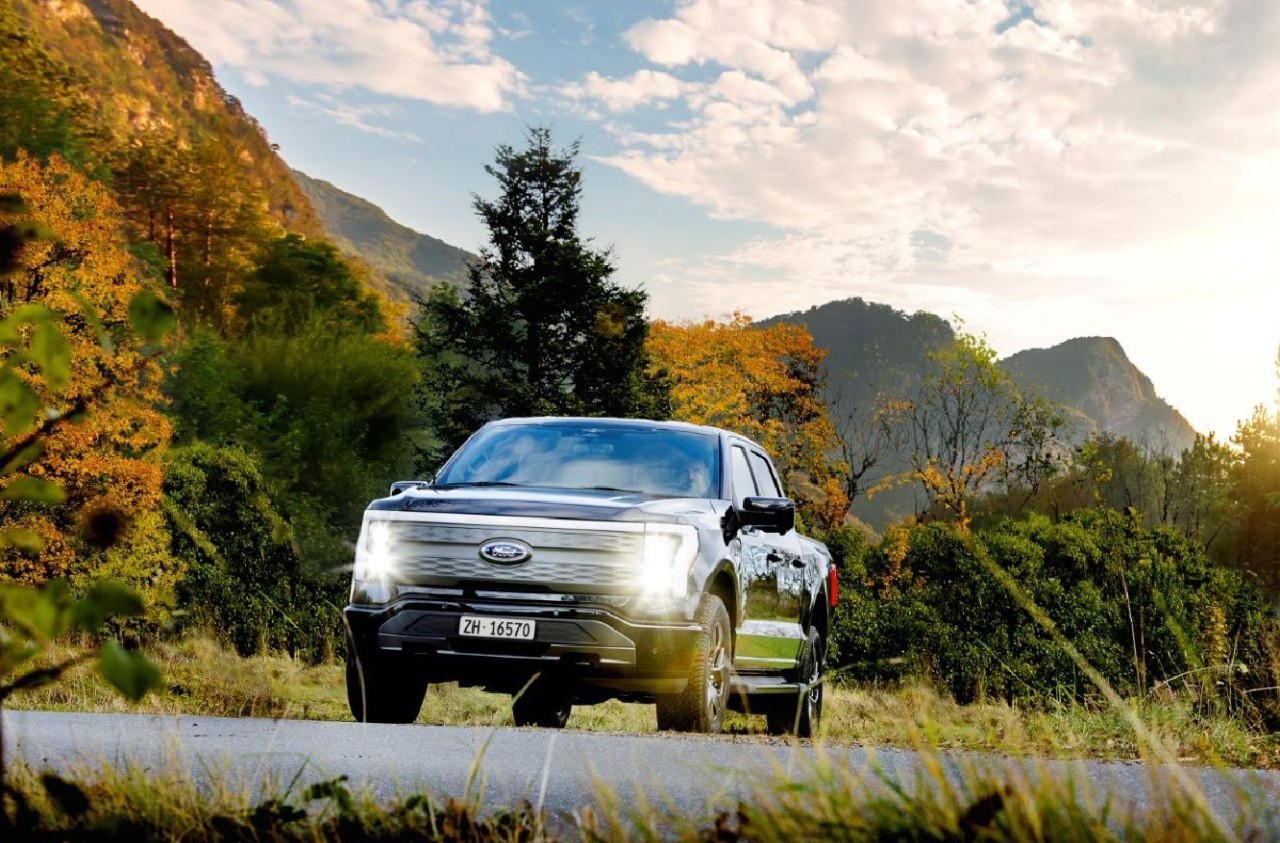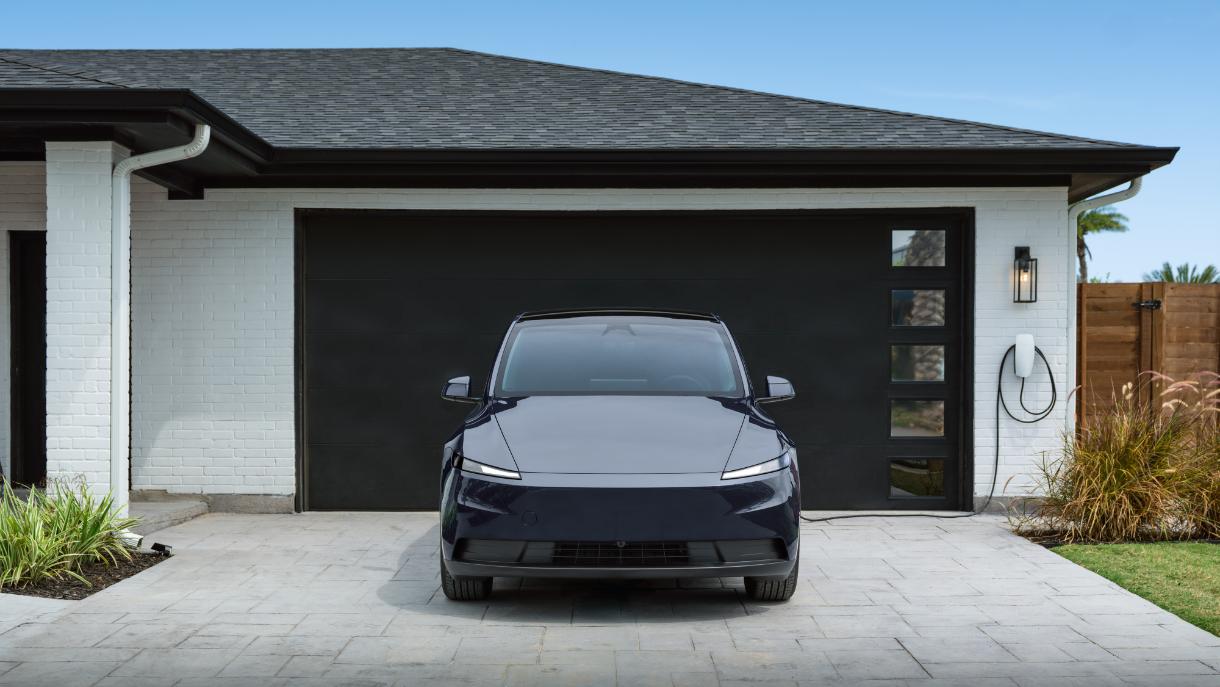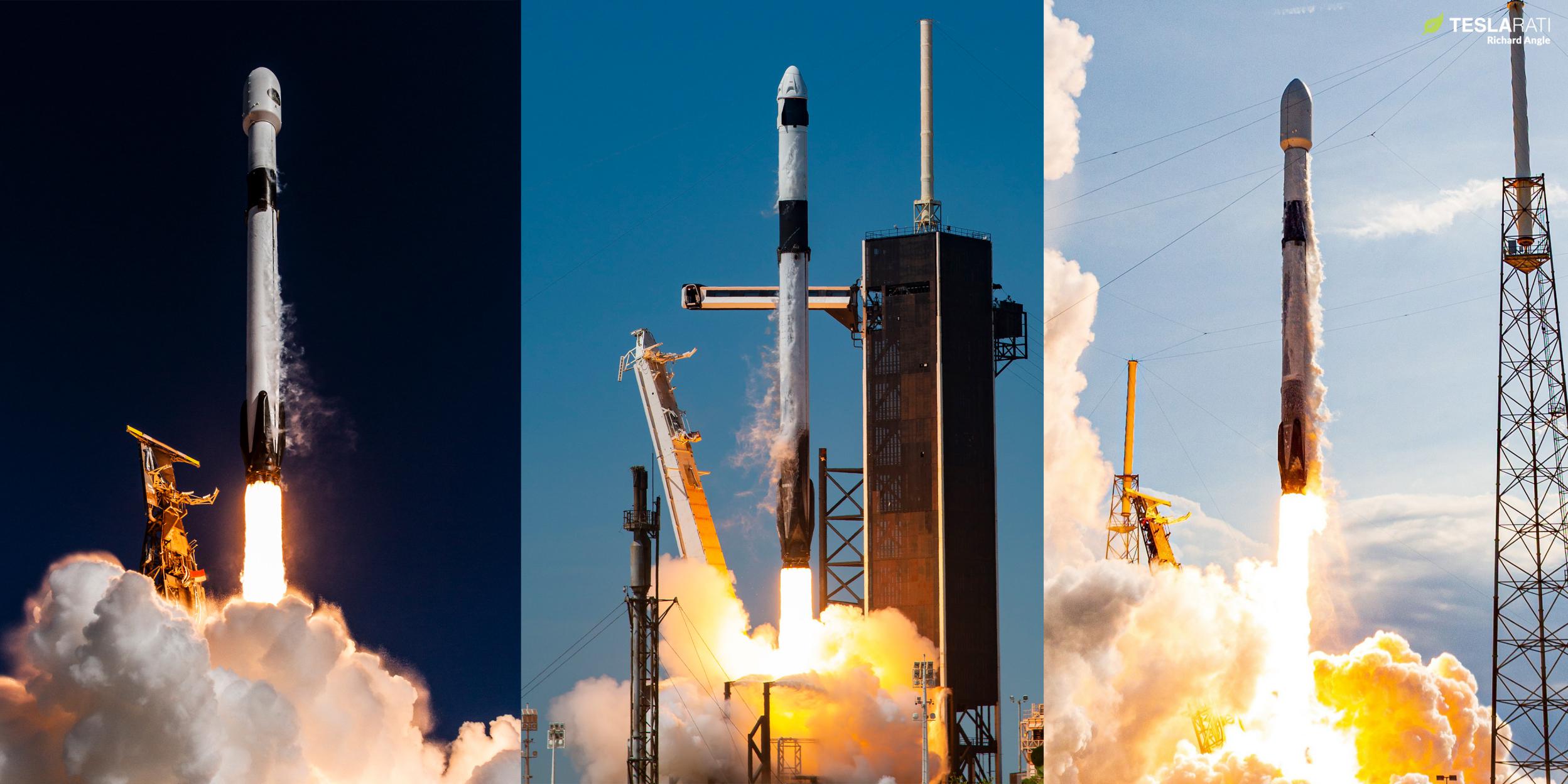Update: SpaceX says it and NASA are moving forward with plans to launch a Crew Dragon carrying US, Japanese, and Russian astronauts as early as noon EDT (16:00 UTC) on Wednesday, October 5th.
Concurring with a statement made on October 3rd, SpaceX has also called off a planned October 4th launch of its Starlink 4-29 mission. However, the company has delayed Starlink 4-29 just 24 hours and says that Falcon 9 will launch the latest batch of internet satellites out of California no earlier than (NET) 4:10 pm PDT (23:10 UTC) on October 5th. Intelsat has also confirmed that its Galaxy 33 and Galaxy 34 geostationary communications satellites are scheduled to launch on a Falcon 9 rocket as early as 7:07 pm EDT (23:07 UTC) on October 6th, leaving SpaceX on track to launch three Falcon 9 rockets from three launch pads in 31 hours.
The company achieved a similar feat earlier this year when it launched three Falcon 9 rockets in 36 hours. Three launches in 31 hours would break that record.
SpaceX is on the cusp of launching three Falcon 9 rockets in a handful of days. Minor issues with two of the three missions, however, have complicated the already hard process of coordinating so many launches at the same time.
For many reasons, rocket launches are an inherently difficult thing to schedule, and that difficulty only gets magnified when attempting to launch rockets as quickly as possible for customers with very different needs while using a fixed number of launch pads. SpaceX’s upcoming series of launches demonstrates the slippery nature of high-cadence rocket launch scheduling better than most.
Last month, SpaceX ran into issues (mainly bad weather) that delayed its Starlink 4-34, 4-35, and 4-36 missions by varying degrees. Before those delays, SpaceX had intended to break its LC-40 pad turnaround record with Starlink 4-35 and then repeat the feat with Starlink 4-36, but that opportunity closed when Starlink 4-34’s several weather delays pushed Starlink 4-35 from September 19th to the 24th and raised the risk of the next launch, Starlink 4-36, interfering with customer missions planned in the first half of October.
That burst of customer missions, all of which take priority over SpaceX’s own Starlink missions, meant that a few-day delay for a mission two launches prior ultimately pushed Starlink 4-36 from the end of September to no earlier than October 20th. It will launch out of Cape Canaveral Space Force Station’s (CCSFS) LC-40, the same pad that launched Starlink 4-35 on September 24th and will launch Intelsat’s Galaxy 33 and 34 satellites no earlier than (NET) October 6th and Eutelsat’s Hotbird 13F satellite NET October 13th. All four launches (including Starlink 4-36) are thus contingent upon each other, so a delay with one mission would likely delay each subsequent mission to leave enough time for pad turnaround and rocket processing.
Date Mission Rocket Location Pad 10/04/22 Starlink 4-29 Falcon 9 California VSFB SLC-4E 10/04/22 SES-20/21 Atlas V Florida CCSFS LC-41 10/05/22 Crew-5 Falcon 9 Florida KSC LC-39A 10/06/22 Galaxy 33/34 Falcon 9 Florida CCSFS LC-40 10/13/22 Hotbird 13F Falcon 9 Florida CCSFS LC-40 10/20/22 Starlink 4-36 Falcon 9 Florida CCSFS LC-40
SpaceX isn’t the only company that launches out of Cape Canaveral, Florida. Originally scheduled in late September, the United Launch Alliance’s (ULA) Atlas V launch of the SES-20 and SES-21 geostationary communication satellites was delayed by the same weather system that indirectly hampered Starlink 4-35 and 4-36. That mission is now set to launch NET 5:36 pm EDT (21:36 UTC) on October 4th.
Up first, however, is SpaceX’s Starlink 4-29 mission out of California’s Vandenberg Space Force Base (VSFB). Delayed to October 4th hours before its October 3rd target, the new schedule will give SpaceX “more time for pre-launch checkouts,” Falcon 9 will now lift off as early as 4:48 pm PDT (23:48 UTC), a little over two hours after Atlas V. However, making the whole situation even more interlinked, SpaceX says it will stand down from its October 4th Starlink launch attempt if its next Florida mission – Crew Dragon’s fifth operational NASA astronaut launch – remains on track for its current noon EDT (16:00 UTC), October 5th launch target.
In an October 3rd briefing following a mostly clean launch readiness review (LRR), NASA and SpaceX officials revealed that three new minor issues – “not showstoppers” – had appeared after a busy period of ground testing. An otherwise successful astronaut dry dress rehearsal and a subsequent wet dress rehearsal and static fire uncovered a possible fire extinguisher leak in the Dragon spacecraft and a minor issue with one of the Falcon 9 rocket booster’s nine Merlin 1D engines. A communications issue was also discovered on the SpaceX drone ship Crew-5’s rocket booster is meant to land on in the Atlantic Ocean.
SpaceX and NASA officials weren’t especially worried about the issues and were confident they would be resolved in time for an October 5th launch. If they aren’t and Crew-5 slips to October 6th, SpaceX should be able to launch Starlink 4-29 on October 4th, but then it’s unclear if the company will also be able to launch Intelsat’s Galaxy 33 and Galaxy 34 geostationary communications satellites on the same day as Crew-5. Galaxy 33/34 is scheduled to launch NET 7:07 pm EDT on October 6th, likely ~6 hours after Crew-5’s own October 6th launch window.
If Crew-5 slips and Galaxy 33/34 can’t launch on the same day, it would likely delay both Hotbird 13F and Starlink 4-36. It’s also unclear if Starlink 4-29 can launch on the same day as Crew-5 if it flies after Dragon. Either way, SpaceX could potentially end up launching Crew-5, Galaxy 33/34, and Starlink 4-29 on October 5th and 6th – potentially less than a day and a half apart.
As SpaceX continues to push the limits of what is possible with its existing Falcon launch and landing infrastructure, chaotic scheduling situations like this, where small issues impact large strings of launches, will become the norm instead of the exception

News
Ford cancels all-electric F-150 Lightning, announces $19.5 billion in charges
“Rather than spending billions more on large EVs that now have no path to profitability, we are allocating that money into higher returning areas, more trucks and van hybrids, extended range electric vehicles, affordable EVs, and entirely new opportunities like energy storage.”

Ford is canceling the all-electric F-150 Lightning and also announced it would take a $19.5 billion charge as it aims to quickly restructure its strategy regarding electrification efforts, a massive blow for the Detroit-based company that was once one of the most gung-ho on transitioning to EVs.
The announcement comes as the writing on the wall seemed to get bolder and more identifiable. Ford was bleeding money in EVs and, although it had a lot of success with the all-electric Lightning, it is aiming to push its efforts elsewhere.
It will also restructure its entire strategy on EVs, and the Lightning is not the only vehicle getting the boot. The T3 pickup, a long-awaited vehicle that was developed in part of a skunkworks program, is also no longer in the company’s plans.
Instead of continuing on with its large EVs, it will now shift its focus to hybrids and “extended-range EVs,” which will have an onboard gasoline engine to increase traveling distance, according to the Wall Street Journal.
“Ford no longer plans to produce select larger electric vehicles where the business case has eroded due to lower-than-expected demand, high costs, and regulatory changes,” the company said in a statement.
🚨 Ford has announced it is discontinuing production of the F-150 Lightning, as it plans to report a charge of $19.5 billion in special items.
The Lightning will still be produced, but instead with a gas generator that will give it over 700 miles of range.
“Ford no longer… pic.twitter.com/ZttZ66SDHL
— TESLARATI (@Teslarati) December 15, 2025
While unfortunate, especially because the Lightning was a fantastic electric truck, Ford is ultimately a business, and a business needs to make money.
Ford has lost $13 billion on its EV business since 2023, and company executives are more than aware that they gave it plenty of time to flourish.
Andrew Frick, President of Ford, said:
“Rather than spending billions more on large EVs that now have no path to profitability, we are allocating that money into higher returning areas, more trucks and van hybrids, extended range electric vehicles, affordable EVs, and entirely new opportunities like energy storage.”
CEO Jim Farley also commented on the decision:
“Instead of plowing billions into the future knowing these large EVs will never make money, we are pivoting.”
Farley also said that the company now knows enough about the U.S. market “where we have a lot more certainty in this second inning.”
News
SpaceX shades airline for seeking contract with Amazon’s Starlink rival

SpaceX employees, including its CEO Elon Musk, shaded American Airlines on social media this past weekend due to the company’s reported talks with Amazon’s Starlink rival, Leo.
Starlink has been adopted by several airlines, including United Airlines, Qatar Airways, Hawaiian Airlines, WestJet, Air France, airBaltic, and others. It has gained notoriety as an extremely solid, dependable, and reliable option for airline travel, as traditional options frequently cause users to lose connection to the internet.
Many airlines have made the switch, while others continue to mull the options available to them. American Airlines is one of them.
A report from Bloomberg indicates the airline is thinking of going with a Starlink rival owned by Amazon, called Leo. It was previously referred to as Project Kuiper.
American CEO Robert Isom said (via Bloomberg):
“While there’s Starlink, there are other low-Earth-orbit satellite opportunities that we can look at. We’re making sure that American is going to have what our customers need.”
Isom also said American has been in touch with Amazon about installing Leo on its aircraft, but he would not reveal the status of any discussions with the company.
The report caught the attention of Michael Nicolls, the Vice President of Starlink Engineering at SpaceX, who said:
“Only fly on airlines with good connectivity… and only one source of good connectivity at the moment…”
CEO Elon Musk replied to Nicolls by stating that American Airlines risks losing “a lot of customers if their connectivity solution fails.”
American Airlines will lose a lot of customers if their connectivity solution fails
— Elon Musk (@elonmusk) December 14, 2025
There are over 8,000 Starlink satellites in orbit currently, offering internet coverage in over 150 countries and territories globally. SpaceX expands its array of satellites nearly every week with launches from California and Florida, aiming to offer internet access to everyone across the globe.
Currently, the company is focusing on expanding into new markets, such as Africa and Asia.
News
Tesla Model Y Standard stuns in new range test, besting its Premium siblings
Tesla’s newer vehicles have continued to meet or exceed their EPA estimates. This is a drastic change, as every 2018-2023 model year Tesla that Edmunds assessed did not meet its range estimates.

The Tesla Model Y Standard stunned in a new range test performed by automotive media outlet Edmunds, besting all of its Premium siblings that are more expensive and more luxurious in terms of features.
Testing showed the Model Y Standard exceeded its EPA-estimated range rating of 321 miles, as Edmunds said it is the “longest-range Model Y that we’ve ever put on our loop.” In the past, some vehicles have come up short in comparison with EPA ranges; for example, the Model Y’s previous generation vehicle had an EPA-estimated range of 330 miles, but only drove 310.
Additionally, the Launch Series Model Y, the first configuration to be built in the “Juniper” program, landed perfectly on the EPA’s range estimates at 327 miles.
It was also more efficient than Premium offerings, as it utilized just 22.8 kWh to go 100 miles. The Launch Series used 26.8 kWh to travel the same distance.
It is tested using Edmunds’ traditional EV range testing procedure, which follows a strict route of 60 percent city and 40 percent highway driving. The average speed throughout the trip is 40 MPH, and the car is required to stay within 5 MPH of all posted speed limits.
Each car is also put in its most efficient drive setting, and the climate is kept on auto at 72 degrees.
“All of this most accurately represents the real-world driving that owners do day to day,” the publication says.
With this procedure, testing is as consistent as it can get. Of course, there are other factors, like temperature and traffic density. However, one thing is important to note: Tesla’s newer vehicles have continued to meet or exceed their EPA estimates. This is a drastic change, as every 2018-2023 model year Tesla that Edmunds assessed did not meet its range estimates.
Tesla Model Y Standard vs. Tesla Model Y Premium
Tesla’s two Model Y levels both offer a great option for whichever fits your budget. However, when you sit in both cars, you will notice distinct differences between them.
The Premium definitely has a more luxurious feel, while the Standard is stripped of many of the more premium features, like Vegan Leather Interior, acoustic-lined glass, and a better sound system.
You can read our full review of the Model Y Standard below:
Tesla Model Y Standard Full Review: Is it worth the lower price?










